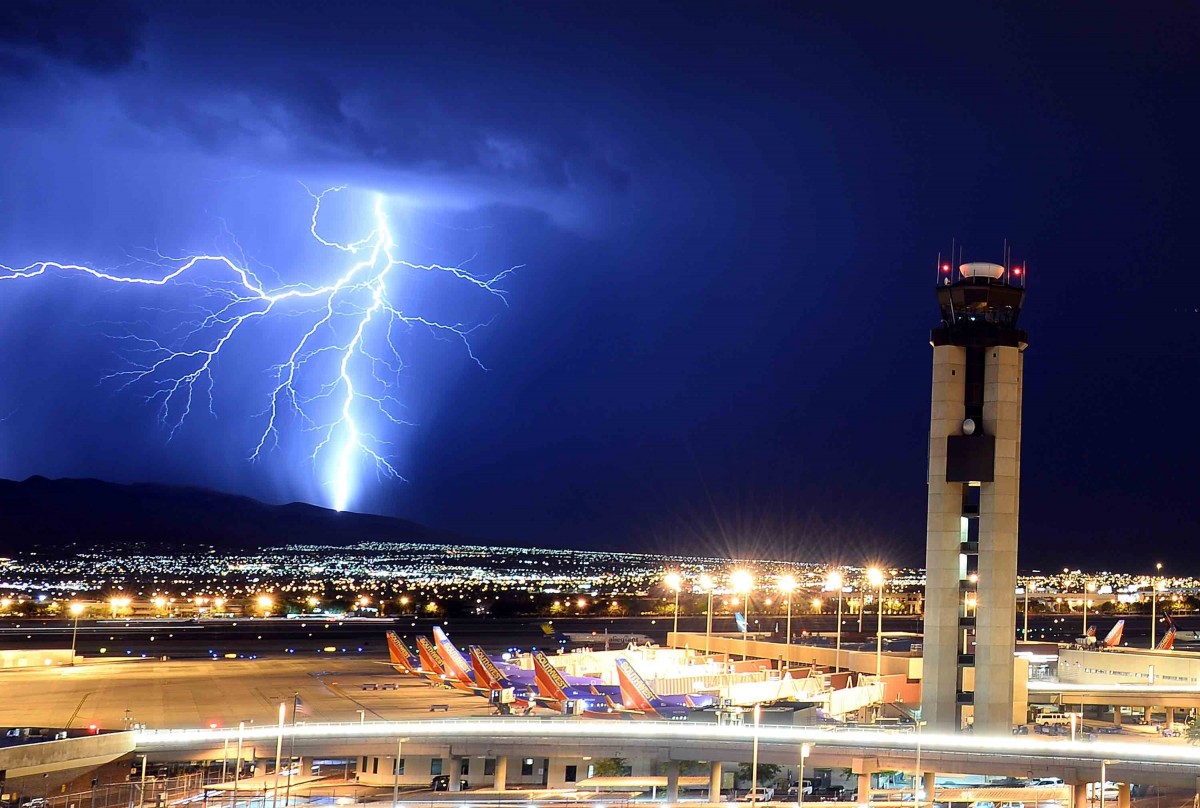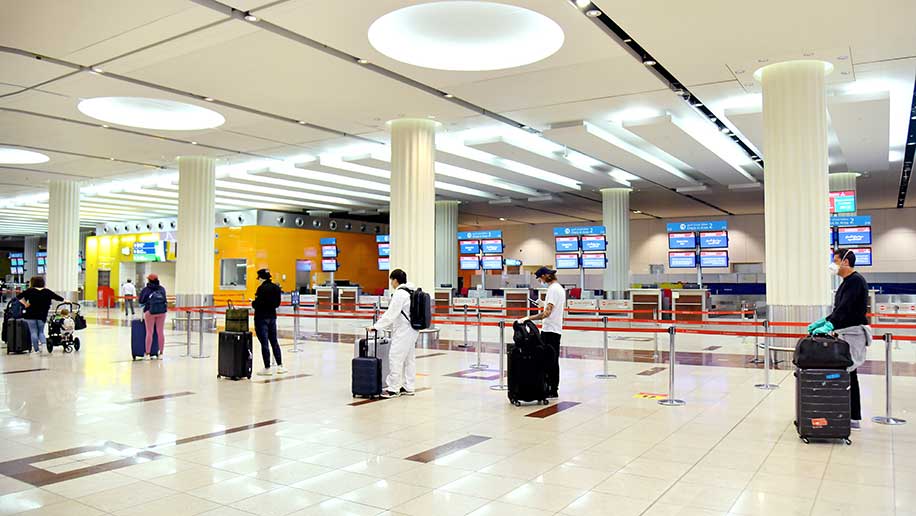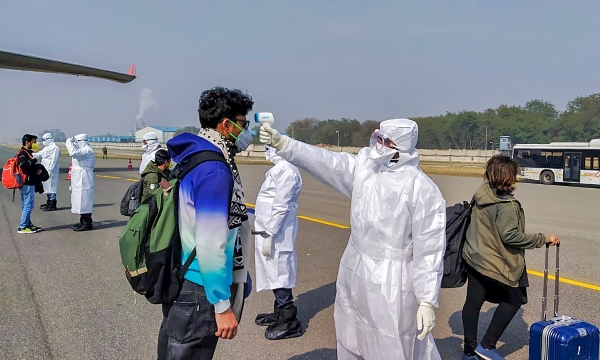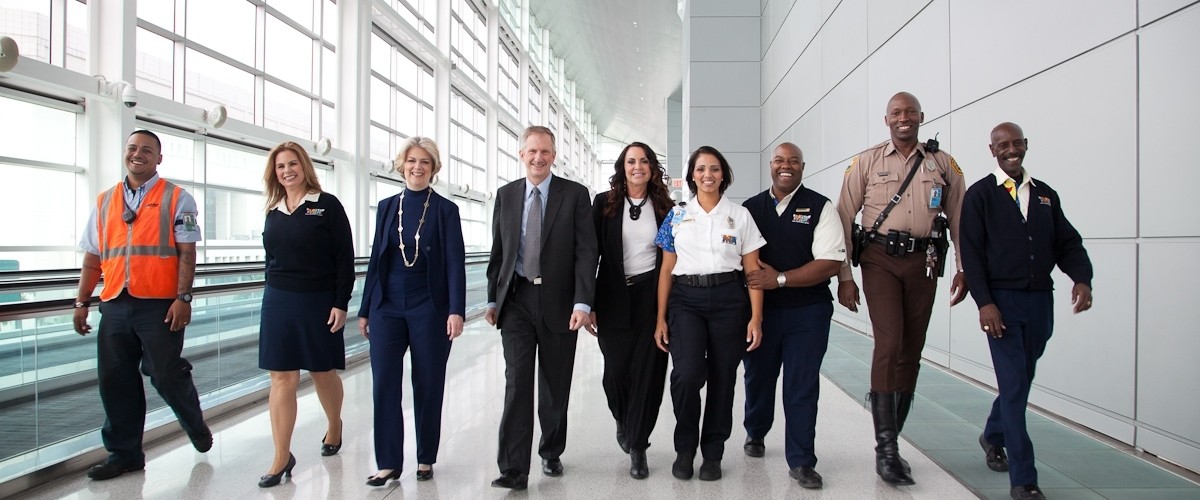by Max Hirsh and Moe Kamleh
This is the first article in a series about what makes an airport resilient, and why resilience matters for the aviation industry. Today, we focus on two key aspects: operational resilience and financial resilience.
by Max Hirsh and Moe Kamleh
This is the first article in a series about what makes an airport resilient, and why resilience matters for the aviation industry. Today, we focus on two key aspects: operational resilience and financial resilience.

2020 has been tough for aviation. As we enter the final months of one of the most challenging years in the history of our industry, now is a good time to reflect on two key questions: what could we have done differently? And looking ahead, how can we become better prepared for future crises—of which there will be many?
By all accounts, COVID-19 has had a devasting effect on air travel. But it’s also taught airports and airlines some valuable lessons. Above all, it’s reminded us how important it is to prepare for the unexpected, and to adapt quickly and flexibly to sudden, irreversible changes. Those two qualities can be summarized in a single concept: resilience.
A popular area of research among planners, psychologists, and the defense community, resilience is defined as an organization’s ability to survive and remain operational in the wake of disruptions. For aviation, resilience is paramount. From the get-go, air travel has been a volatile industry. In the early decades of civil aviation—when aircraft technology and the airline business model were in their infancy—plane crashes and bankruptcies were commonplace. As the industry matured over the 20th century, it faced a slew of manmade challenges such as terrorism and deregulation, both of which fundamentally altered the way we design and operate airports. By contrast, since September 11th most disruptions originated in nature. A volcanic eruption in 2010 closed shut down European airspace for weeks on end. Extreme weather events linked to climate change—which are becoming more frequent and more destructive—have the potential to paralyze airports with little advance warning. Public health crises, such as the 2003 SARS outbreak, can take a heavy toll on the entire global transport network. With hindsight, SARS turned out to be a sneak preview of the intertwined epidemic, economic, and operational challenges that airports face today.
If we took a time machine back to 2019 and asked a group of aviation thought leaders to predict the biggest challenges for the industry, I doubt that many would have cited a global health crisis. Like any complex system, aviation faces countless risks, and it’s simply impossible to prepare for every scenario. But COVID has demonstrated the importance of resilience. It also highlighted a deep divide between industry players who can adapt, and those who can’t. Less successful airports responded to the crisis by denying that it was happening, carrying on with business as usual even as it became abundantly clear that that wasn’t an option. By contrast, successful airports recognized that something big was happening, and that they needed to adapt quickly in order to survive. While the virus is pummeling the entire industry right now, some airports are doing significantly better than others. That’s because they craft contingency plans and a workplace mentality that places resilience front and center.

But what exactly does resilience mean? To answer that question, we have identified four key pillars of resilience that empower successful airports to distinguish themselves from their less successful peers. This article focuses on the first two pillars: operational resilience and financial resilience.
Operational resilience refers to an airport’s ability to maintain operations in the wake of unforeseen events. It depends on two types of flexibility: flexible hardware—that is, flexibility built into the airport’s physical infrastructure—and flexible software, i.e. the ability to quickly adapt operational procedures when disruptions occur.
Architects and engineers design an airport’s physical infrastructure based on current operational requirements and projected future needs. While those projections offer helpful guidelines, successful planners have been in the game long enough to know that operations are likely to evolve and change in ways that can’t be anticipated in the present. For example, when Eastern European airports like Budapest were redeveloped in the late 1980s, few planners could have predicted the introduction of passport-free travel across Europe, which led to different processing guidelines for Schengen and non-Schengen flights. It would be unfair to expect airport planners to anticipate big external shocks like the collapse of communism. But we should expect them to design infrastructure systems that can respond flexibly to unforeseen demands.
Successful airports recognize that the initial capital costs of that design flexibility will more than pay for itself in the long run. Swing gates are a good example. These movable glass partitions allow for a hold room to serve different types of traffic, such as international and domestic. This allows the airport to increase terminal capacity by redefining how spaces are used according to fluctuations in daily or seasonal demand. It also opens up options for accommodating spatial needs that currently can’t be predicted.

Flexible infrastructure is essential for operational resilience—but so, too, are flexible procedures. Airports depend on a standardized set of guidelines to structure their day-to-day operations. But what happens when a disruption occurs and those procedures need to be changed? How quickly can an airport react? Emergency response committees are typically tasked with developing contingency plans for such events. They assess potential risks according to likelihood and severity, and formulate methods to minimize their impact. While that’s a sound approach, it can only be applied to known risks, based on data from past experience. The resulting mitigation plans don’t provide guidance on what to do when something extraordinary occurs.
COVID-19 exposed the limitations of that approach. Before corona, many airports did not factor in health pandemics as a potential risk, or considered them to be extremely improbable. As a result, most airports didn’t have an operational game plan when COVID hit. They struggled with social distancing requirements, which strained queuing capacity and limited sales from concessions at the worst possible time. Few were prepared for the logistics involved in installing on-site COVID testing facilities. Some airports went into panic mode, installing hugely expensive touchless technologies without analyzing how they would impact operations or their financial bottom line.
To sum up: many airports’ response to COVID was a hot mess. What can we do better moving forward? Less successful airports will prepare a detailed plan for dealing with future pandemics. That’s a good idea, but it’s not a great one. Instead, successful airports will prepare a contingency plan that emphasizes operational flexibility: focusing on the likely outcomes, rather than possible causes, of future disruptions. For example, they will prepare for unforeseen declines in staffing levels or increased demand for queuing points—regardless of whether those changes occur because of a pandemic, a natural catastrophe, or the introduction of new technologies.

COVID is both a health crisis and an economic crisis. By wearing masks and practicing social distancing, we can protect ourselves from the virus. It’s a lot harder to protect ourselves from COVID’s financial fallout. Unemployment and underemployment have skyrocketed this year, and many more people will lose their jobs in the months ahead. Airports and airlines are facing tough questions from shareholders, regulators, and lenders. Some are openly skeptical about the industry’s long-term ability to survive.
An airport’s financial resilience refers to its ability to continue generating income in the face of economic disruptions, and to amass the cash reserves needed to see the organization through unprofitable cycles. Not surprisingly, an airport’s ability to withstand the impact of external shocks and macroeconomic stresses is one of the top criteria that ratings agencies like Fitch use to assess an airport’s credit rating.
Unfortunately, the pandemic revealed that many airports lack the solid financial footing to sustain cashflows during prolonged period of uncertainty. COVID also taught airports a valuable lesson: if you want to survive, diversify your revenue.
Airports that rely heavily on a single income source—say, passenger and airline fees stemming from a single carrier—have fared much worse this year compared to airports that have a broad portfolio of income sources. That’s because successful airports strike a balance between passenger-related revenue and non-passenger revenue. As the name suggests, passenger-related income sources—such as pax facility charges, parking, car rental, and travel retail—depend on air travelers for growth. When passengers disappear, that income does too. By contrast, non-passenger revenue sources—such as cargo and real estate—are immune to sudden changes in passenger numbers. When travelers evaporate, they keep generating income for the airport (more on that here and here).
The pandemic has forced airports to confront two daunting questions: when our main income sources decline, do we have the necessary financial reserves to fall back on? And do we have additional revenue streams to keep us afloat in the meantime? Moreover, COVID has ushered in a paradigm shift in how airports make money. While passenger air service will continue to be our core business, non-passenger activities like cargo and real estate will play a much larger role in the coming business cycle. An airport’s financial resilience—and creditworthiness—will therefore depend heavily on whether airports can generate both passenger-related and non-passenger revenue.

Operational and financial resilience are both essential to guarantee an airport’s ability to weather—and even thrive—during unforeseen periods of stress. But airport resilience also depends on training a resilient workforce, and on nurturing resilient relationships with key partners in the public and private sector. More on that next time.
Until then, here are a few questions for you: what is your airport doing to strengthen its operational resilience and its financial resilience? What goals are you setting, and what are the barriers to achieving them? Write to us here.
Max Hirsh is Managing Director of the Airport City Academy.
Moe Kamleh is a Technical Project Manager at Aecon.